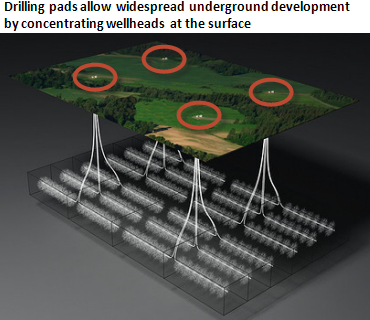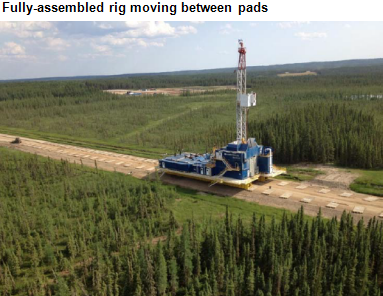State geological surveys are important sources of information and expertise related to subsurface geology, water resources, and
energy. AASG members regularly monitor and discuss issues related to hydraulic fracturing. Several state surveys have been
engaged in investigations of potential freshwater contamination that may have been caused by recent hydraulic fracturing-related
activities; others are undertaking research on, and providing information about, hydraulic fracturing. The following points constitute
AASG’s position on hydraulic fracturing:
• AASG advocates that comprehensive public information based on sound science and open processes be utilized when
formulating energy and environmental policy. We encourage a balanced, independent, fact-based analysis of controversies
regarding natural resource development.
• AASG supports and encourages the disclosure of hydraulic fracturing fluids and chemical additives on FracFocus, the
hydraulic fracturing chemical registry website, developed by the Interstate Oil and Gas Compact Commission (IOGCC) and the
Groundwater Protection Council (GWPC).
• AASG advocates for better understanding and scientific documentation of our subsurface geology and aquifers, which will
result in improved geologic models to help all parties avoid problems that might occur during drilling and hydraulic fracturing
activities of oil or gas reservoirs, especially in new fields. This will allow safer and enhanced production of oil and gas.
• AASG is committed to protecting the nation’s public safety and the natural environment, including groundwater and
surface-water resources. AASG supports the wise and prudent production of oil and gas resources to help fulfill the nation’s
energy needs.
• AASG recognizes the economic and social importance, and the abundance, of oil and gas resources that only can be
recovered if reservoir rocks are hydraulically fractured.
• AASG maintains that state oil and gas regulatory agencies are best equipped, through statutory authority, expertise, and
experience, to ensure that hydraulic fracturing and all other operations associated with oil and natural gas development
proceed in a manner that protects the natural environment, including public safety as well as groundwater and surface-water
resources.
• AASG recognizes that the environmental record of hydraulic fracturing activities over the past 60 years has been
overwhelmingly positive. AASG also maintains that operators who do not follow regulatory requirements should be
appropriately sanctioned and, where appropriate, barred from conducting further oil and gas operations.
• AASG notes that geologic data generally show a significant vertical separation between most oil and natural gas reservoirs
targeted for hydraulic fracturing and the shallower freshwater aquifers. In areas where targets of hydraulic fracturing are
comparatively close to freshwater aquifers, thorough geologic characterization of the area is warranted and even greater
caution should be exercised by operators and regulatory agencies.
• AASG recognizes the fast pace of recent drilling for oil and natural gas and the associated hydraulic fracturing activities. AASG
suggests that caution and careful attention to community relations be exercised by operators, contractors, and regulators in the
design, review, approval, documentation, implementation, and verification of plans for the drilling, completion, stimulation and
production of oil and gas wells.
• AASG encourages continuing work to acquire and maintain local pre-drilling water quality assessment and ongoing information
on groundwater quality, and recommends that casing and cementing operations in hydraulically fractured wells be carefully
documented by operators, contractors, and regulators.
Water used for hydraulic fracturing is generally obtained from nearby water wells, lakes, streams and rivers. Although a
substantial amount of water is used in hydraulic fracturing, this represents a one-time use, and the amount is considerably less
than the volumes required in other common ongoing uses, such as agriculture, municipal supplies, and industrial processes. Oil
and gas operators must follow state laws in the acquisition and use of water and make sure that they do not negatively impact
local (individual, city, or county) water supplies. The industry is working to reduce their freshwater needs, including recycling the
water they use in hydraulic fracturing operations.
Much of the water used in hydraulic fracturing flows from the well along with gas, oil, and saline water during normal production
operations. That "wastewater," or “flow-back water," must be recycled or disposed of properly. Disposal is generally through deep
wells drilled specifically for that purpose. In some locations, injecting returned water into deep wells has triggered small earthquakes
(generally less than Magnitude 3.0), a phenomenon called triggered seismicity or induced seismicity. Proper well siting
away from faults and using managed injection rates and pressures can minimize or eliminate triggered seismicity.
With new technologies, exploration has expanded into areas and communities that have seen little oil and gas drilling, or have
not seen it recently. That has created a variety of new issues--some positive, some negative. Caution, good judgment, and sound
regulatory practices must be exercised in areas where less information is available about the subsurface geology.

















